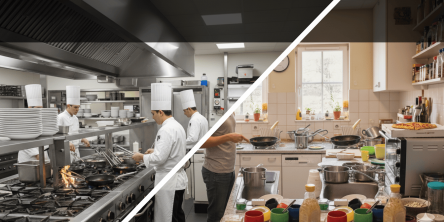How To Maintain And Protect Your Marble Living Room Table

Marble is a luxury and high-end material that imparts a sense of timelessness to any living space. From a white Carrara marble table to an intricately veined dark marble surface, its elegance and sophistication make it an incredible focal point in your living space.
However, marble is also a sensitive and porous material that must be cared for properly to keep it shining and prevent damage. If left without maintenance, it will stain, scratch, or get dull in the long term, losing its natural beauty.
That being said, there is a required maintenance procedure to keep your marble table in perfect shape.
Here are a few ways that you can keep your marble table in shape.
1. Cleaning Your Marble Table Regularly
The most effective method of keeping your marble table in good condition is through constant cleaning. Since marble is highly porous, it has a tendency to absorb liquids and stain if spills are allowed to dry. Dust and other particles also settle, causing minor scratches on the surface in the long run.
For everyday cleaning, a soft microfiber cloth or a sponge and warm water should be used. Rub the surface softly to remove dust, crumbs, and light debris. To clean more deeply, a few drops of mild dish soap may be added to the water and rubbed on with a damp cloth. Avoid too much soap, as it will leave a residue that strips the marble of its natural sheen.
Always dry the table once you have cleaned it with a clean, dry microfiber cloth to prevent water spots. Don't let the water stand on the surface, as it will soak and stain the marble.
Dusting and cleaning spills as they occur will preserve the smooth, glossy surface of your marble living room table.
2. Avoiding Harsh Chemicals and Abrasive Cleaners
A central part of marble care is choosing the right cleaning products. Abrasive, acidic, and harsh chemicals will damage the surface, remove the protective coating from the surface, and etch the surface.
Etching appears as dull, cloudy spots that are difficult to remove and will ruin the glossy shine on the table.
Avoid vinegar, lemon juice, bleach, ammonia, and any acidic cleaning products. Instead, use pH-neutral marble cleaners specifically designed to clean marble surfaces. These products clean the table without harming it. For more stubborn stains, mix baking soda and water to form a paste.
Apply the paste to the stain, let it sit for a few hours, and wash it off with a damp cloth.
3. Sealing Your Marble Table for Protection
Sealing is a key to avoiding stains and moisture damage to your marble table. As a porous stone, marble will soak up liquids instantly if the surface is not sealed, resulting in permanent stains. A great marble sealant acts as a barrier, reducing absorption and allowing spills to be wiped away more easily without penetrating the stone.
Most marble tables come sealed, but the coating will eventually wear off. Drop a few drops of water on the surface to find out if you need to reapply the coating. If the water beads, the coating is still intact. If it is absorbed into the marble within a few minutes, you must reapply the coating.
Choose a penetrating marble sealant and follow the manufacturer's directions to put it on. In most instances, you must clean the table thoroughly, apply the sealant evenly with a soft cloth, and allow it to dry for several hours. Re-sealing the table every six to twelve months will protect it adequately and contribute to its longevity.
4. Polishing Your Marble Table for a Lasting Shine
Marble gradually loses its shiny luster due to everyday wear and tear and exposure to dust and moisture. Periodic polishing can restore the luster and enhance the natural beauty of the stone.
You may use a commercial marble polish or prepare a homemade solution by combining baking soda and water. Rub the polish into the surface with a soft cloth, buffing in a circular motion to restore the surface to a sheen.
Always follow with a dry cloth to remove any excess.
5. Handling Stains and Spills Immediately
No matter how careful you are, accidents do happen. The best thing to do to prevent permanent stains on your marble table is to act quickly. When you spill, blot the liquid with an absorbent, soft cloth, and do not wipe it, as that will spread the stain.
For oil stains, such as grease and cosmetics, mild dish soap and warm water will remove the stain. Hydrogen peroxide and a few drops of ammonia will dissolve organic stains, such as coffee, tea, and fruit juice. Always test any cleaning solution first on an out-of-the-way, hidden area to ensure it will not harm the marble.
Wrapping Up
A marble living room table is an enduring investment that adds elegance and beauty to your home. However, beauty comes with the responsibility to clean and maintain it properly. With frequent cleaning, precautions, and surface sealing, if needed, you can keep your marble table as beautiful as new for decades.
Simple precautions, such as using coaster placemats and steering clear of harsh chemicals, will guard against typical issues such as staining, etching, and scratching. Regular polishing and long-term upkeep will also preserve the table's luxurious appearance.
Similar Articles
As winter settles in and temperatures drop, families across the country brace themselves for the inevitable spike in energy bills.
Wooden floors have long been the subject of admiration for their classic beauty, natural warmth, and strength.
When it comes to giving your home a fresh coat of paint, most homeowners focus on choosing the perfect color and finish.
The holiday season transforms neighbourhoods into glowing wonderlands, but today's homeowners are moving beyond the traditional approach of simply stringing lights wherever they fit.
City homes face a constant challenge around outdoor space. Gardens are small or nonexistent, balconies are narrow, and any outdoor area feels precious.
Anyone who's worked in a commercial kitchen knows they operate with an efficiency that home kitchens rarely match.
When you want to transform your home with a complete makeover, you must find the best ways to save money. Let's check some cost-saving tips for renovating.
Handrails are one of the few things that merge safety, fashion, and structural importance in a home most naturally when the home is being either designed or renovated.
Cabinets play a vital role in any home, combining function, organization, and aesthetic appeal. Whether in the kitchen, bathroom, or living area, cabinetry defines the layout, storage capacity, and overall look of a space.









